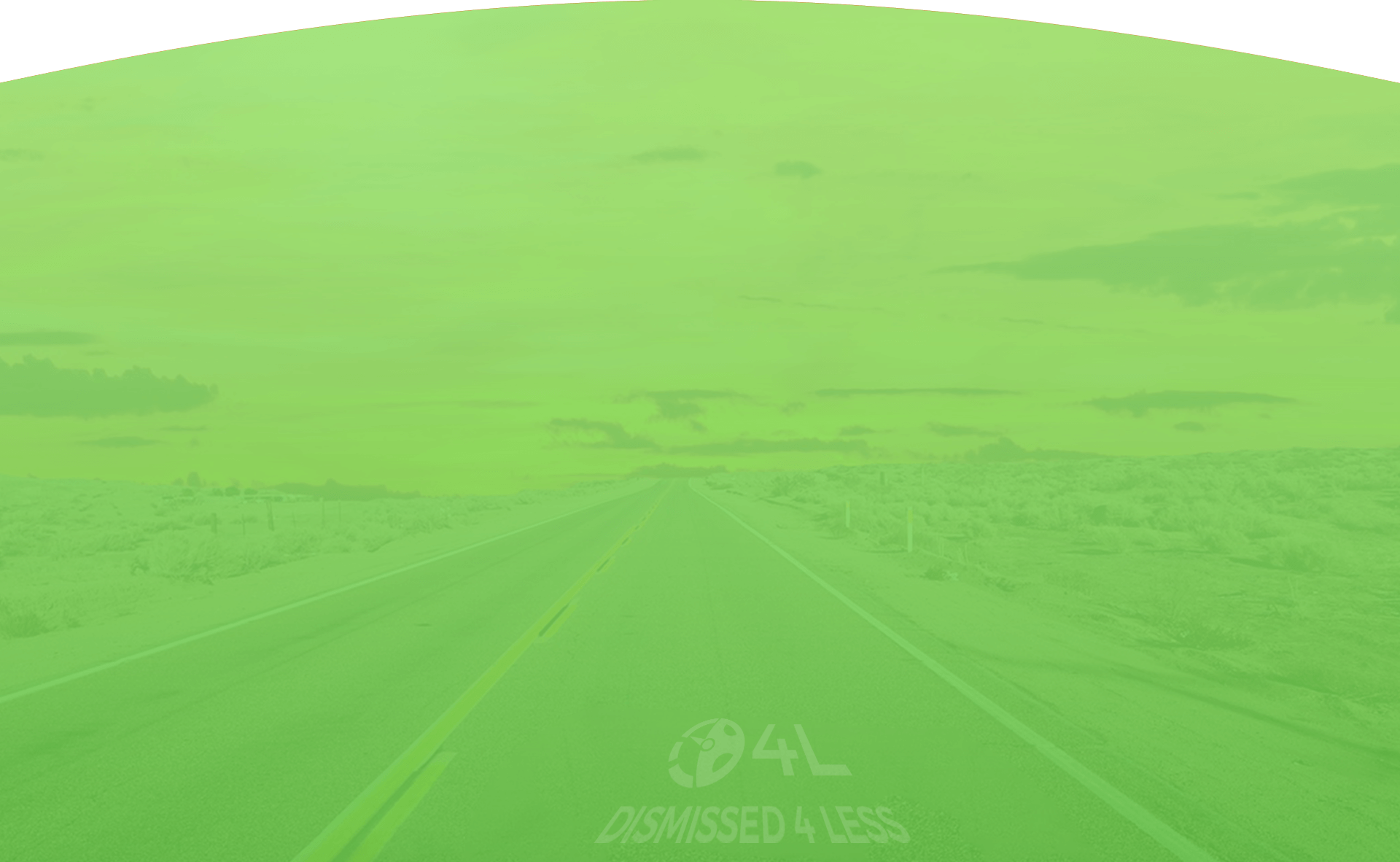Red Light Ticket California (officer issued)
There’s nothing that puts a damper on your day than getting a red light ticket. Without knowing the laws regarding red light tickets, you are likely to assume that you were in the wrong. This is why it is so important to know the laws and regulations when it comes to red lights and any traffic tickets that can be associated with them.
What Are the Rules Regarding Driving in California?
There are a few laws that are found under Code 21453 VC. In this section, there are 4 rules that all drivers must abide by at all times. These rules include:
- All drivers must stop at red lights.
- Drivers are allowed to turn right on circular red lights.
- Drivers are also allowed to turn left on circular red lights, however, this must only be done so when turning from a one-way street onto another one-way street.
- All drivers must stop at red arrow signals.
As mentioned by the California DMV website, “Solid Red–A red traffic signal light means “STOP.” You can make a right turn against a red traffic signal light after you stop. Yield to pedestrians, bicyclists, and vehicles close enough to be a hazard. Make the right turn only when it is safe. Do not turn if a “NO TURN ON RED” sign is posted.”
With that being said, it is easy to assume that all drivers must stop at a red light or they are risking a red light ticket. This is in accordance with California Vehicle Code 21453 (a), which is a failure to stop at a red light.
Can Drivers Turn on Red Lights?
Where it may become a bit more confusing is when it comes to turning on red lights. Although there are traffic schools and testing that must be done before one can obtain their driver’s license, some people still find themselves on the fence when it comes to turning on a red light. Let’s take a closer look at the rules regarding turning on red lights.
Can Drivers Turn Right on a Red Circular Light?
According to Vehicle Code 21453 (b), drivers are only permitted to make a right turn after coming to a complete stop at a circular red light. This specific rule changes, however, if there is a sign that indicates you are or are not allowed to turn on a red light. In a situation where one turns right on a red light and there is a ‘No Turn on Red’ sign, you will likely be issued a red light ticket.
When turning right on a red light, it is extremely important that drivers use extreme caution and always yield the right-of-way to any pedestrians. This is something to keep in mind as, most of the time, a red light also means that pedestrians have the ‘OK’ signal to cross. Pedestrians should always have the right-of-way.
Also, drivers must keep in mind that the laws are different for red arrow signals. While a driver can turn right on a red circular light without receiving a red light ticket, it changes when there is an arrow. This means that the driver is not allowed to turn right when the light signal is red, and doing so could lead to a red light ticket, according to Vehicle Code 21453.
The law goes on to explain that drivers must make a complete stop at red arrow signals before they reach the point of any marked lines on the road, such as a crosswalk, or when they are approaching an intersection. Failure to do so can lead to a red light ticket.
What About Turning Left?
The law is very specific about turning left on a red light. The California DMV Website states that “A left turn against a red light can only be made from a one-way street onto a one-way street.” This means that, at any other time, if you turn left on a red light then this is a violation of the law and you could end up with a red light ticket.
While turning left, it is important to always yield the right-of-way to pedestrians. Again, it’s likely that they have the ‘OK or WALK’ signal to cross when you are trying to turn left at a circular light, so pay close attention when making this driving maneuver.
Challenging a Red Light Ticket
There are multiple ways in which one can try and challenge a red light ticket. It is even more possible to win the challenge when a red light camera was used. It’s always best to contact a professional service when challenging a VC 21453 as they are well aware of the laws regarding this type of traffic ticket.
Most Common Defenses
Any driver who ends up with a red light ticket in which they do not believe they broke the law will need to bring it up in a court of law. There are many defenses a person can use to try and defend their innocence against a red light ticket. Everyone’s situation is different, though, so these defense techniques may or may not be viable if you received a red light ticket.
Here are a few of the most common defenses for fighting a red light ticket in California:
- The driver could not accurately see the red light. If the red light was out of vision for the driver, then they would not be able to see if and when the light turned red. If the red light was hidden or blocked, you will need to prove this in a court of law.
- The officer was wrong about your illegal stop or turn. This is a bit more challenging to defend, but if you are sure that you came to a complete stop before turning, then you will need to prove this in court. Luckily, police officers must have cameras on their persons and vehicles, and these can be used to help your defense, especially if you did stop.
- There was an emergency. If there is some type of emergency, such as a medical emergency such as someone going into labor or having a heart attack, it can be used in court to defend your red light ticket.
- You were trying to avoid a crash. If you can see ahead of you that an accident is about to happen, and you merge out of the way and end up running a red light, it is something that needs to be brought up in court.
- You were yielding to an emergency vehicle. If there is an upcoming emergency vehicle approaching and you need to move out of the way quickly and your only option is to turn or run a red light, that is a valid reason and may hold up in court.
Red Light Ticket Involving a Camera Defenses
Again, everyone will have their own situation when it comes to fighting their red light camera ticket. However, there are some fairly common defense techniques that citizens and lawyers use conjointly to get the red light ticket case that involves a red light camera dismissed.
Someone else was driving the vehicle. Whether you were driving or not, red-light cameras only mail the ticket to the owner of the vehicle. That means, if someone else was driving when the red light camera went off, then you would still be mailed the ticker for the red light. If you were not driving, then it makes for a great defense against the red light ticket.
There are a few ways that a driver can prove he wasn’t driving, including:
- There is a valid police report stating that the vehicle had been stolen prior to the incident.
- There is a rental/lease agreement that proves someone else had possession of your vehicle at the time.
- You can provide some type of evidence, such as being on vacation while the red light ticket occurred.
Unfortunately, if you do not have any proof in regards to whether or not you were driving, you may have to provide the court with the name of the person who was driving the vehicle at the time. This certainly puts the driver in a sticky, awkward situation that may end in a squabble, but it’s really the only way to prove that you were not driving, especially if you do not want to challenge the red light camera ticket. Reaching out to a professional service is also suggested to obtain possible options for your situation.
The good news is that most red light tickets that occur from cameras don’t require a court visit. All you need to do is send in an affidavit along with any documents that provide proof to your statement.
The Camera Malfunctioned. While red light cameras are generally accurate, they are still a piece of electronic equipment that has the potential to malfunction. Sometimes the red light cameras can automatically trigger, even when a driver has not actually run the red light. The issue occurs when a driver fails to come to a complete stop before they reach the line, crosswalk, intersection, etc.
But is that actually breaking the law? Since California states that as long as the two front wheels of the vehicle cross the line before the light turns red -- it’s still yellow -- then no law has been broken. This is challenging for a red light camera to depict properly. Therefore, careful review of the photographs must be performed to see when the car really went through the intersection.
Inadequate Signs. Red-light camera signs must be posted anywhere there is a red light camera at a stop light. If there were no signs posted at the intersection, or they were not clearly visible, then this can be a valid argument in the court of law.
Penalties For a Red Light Ticket
If a driver receives a red light ticket, they should know that there are several penalties that are associated with it. First and foremost, the driver will be issued a point on their driver’s record. There will also be a hefty fine associated with the red light ticket.
Keep in mind that California red light tickets have a base fine as well as fees and surcharges that get added for the final amount. However, the base fines associated with traffic violations go as followed:
- $100 for driving through a red light that is solid or flashing.
- $35 for performing an illegal right turn.
- $35 for running through a stop sign.
After calculating all of the extra fees and surcharges, one can expect their ticket to be upwards of $500 by the end -- and that is not including traffic school. Some traffic schools can be as low as $5, with others being closer to $50. Courts also require a fee to allow drivers to attend traffic school.
Anyone who violates Vehicle Code 21453 VC will automatically receive a single point on their DMV driving record, too. They are recorded by the DMV and automatically sent to the insurance carrier for the individual and their vehicle. A point will almost always lead to an increase in insurance rates, unless you have the option of removing the point with traffic school.
Keep in mind, too, that if a driver exceeds a certain number of points with a 1, 2, or 3-year period, the DMV can declare the individual a negligent driver. This can lead to suspension or revocation of the individual’s driving privileges.
Other Possible Charges
In some circumstances, a red light ticket can also lead to a reckless driving condition. This can occur if someone was injured due to the fact that you ran the red light or turned on a red arrow without it being your turn. In this situation, a driver can face a number of other hefty charges with penalties including:
- Anywhere between 5 and 90 days in jail.
- A fine that ranges from $145 up to $1,000, depending on the circumstances. If any of the offenses committed by the driver leads to the death of an individual, he or she may also end up with a vehicular manslaughter charge. Anyone who receives a vehicular manslaughter charge -- with or without the addition of a Driving Under the Influence charge -- can expect to see jail time and a hefty fine.
Bottom Line
California drivers are expected to follow the laws in regards to stopping at a red light. In some circumstances the driver is allowed to turn right or left on red lights, but they must always come to a complete stop first. Failure to do so can lead to a red light ticket as well as a slew of other penalties including fines and points on their DMV driving record.







